Walk into Xi'an, the ancient capital of the 13th Dynasty, visit the most essential attractions on the 2nd day, and travel through 6000 years
Foreword: I finally walked into the province where I had only not checked in
Shaanxi is one of the only provinces in my country that has not checked in. Xi'an has always been a popular city in recent years and has a historical heritage. This long-term yearning for me even makes me feel a little uneasy when I really want to get close to it. Although I stayed in Xi'an for a short time this time, I also walked through several of the most essential and classic attractions to feel the depth of its history. Moreover, I adopted a relatively special transportation method, which was to take a RV.



stroke
datang Furong garden
Terracotta Warriors
Shaanxi Museums
Dayan Pagoda
Musical Fountain in North Square of Big Wild Goose Pagoda
datang sleepless city
about my
Travel blogger, multi-platform self-media person.
Equipment: Canon EOS R 16-35 f2.8, 85 f1.8; Sony a7 50 f1.8; drone Dajian 2 pro;gopro7; DJI Spirit Eye Osmo; Zhiyun SmoothX.
Post:lightroom, Final Cut Pro
I am very touched that you can see it in the vast sea of Internet. Thank you for paying attention to me!
datang Furong garden
Xi'an is an ancient city full of history and culture. This time, we traveled through time and space and came to Xi'an, a city full of historical stories. The Tang Dynasty Furong Garden is China's largest architectural complex imitating the Tang Dynasty royal family. The royal style in the park is vividly displayed.



The name of Furong Garden was also determined after some emperors 'modifications. When the King of Qin took office, he took a fancy to the beautiful natural environment of the Qujiang area and built a royal forbidden garden here. During the reign of Emperor Wen of the Sui Dynasty, Qujiang River was changed into Furong Garden. This time, the new name Furong Garden is displayed here with the magnificent scene of the royal garden, and many renovations have also been carried out here. After the Tang Dynasty, the construction scale of Furong Garden was expanded, and the cultural connotation here also became very rich. This mile is no longer a place for royal families to visit. Citizens can appear here.



The construction of the royal garden was expanded because of Emperor Xuanzong of the Tang Dynasty and some later emperors. Tang Xuanzong's expansion of Qujiang was very large. He built many famous pavilions and pavilions here, such as Ziyun Tower, Caixia Pavilion and other buildings. The palaces in the Furong Garden, the former Qujiang garden building, are very spectacular and continuous. There are also many cultural and entertainment activities here, which can be said to have reached a climax in the past. This is also the only public garden in Chang 'an City. Due to its destruction, the buildings of the garden were also destroyed. Today's Furong Garden is built completely based on the model of the Tang Dynasty royal garden, and it also fully displays the style of the Tang Dynasty.



Such a complex of buildings built modeled after the royal gardens of the Tang Dynasty is very spectacular. As soon as you step into the Tang Dynasty Furong Garden, you can feel the prosperous scene of Chang 'an City in the Tang Dynasty at that time. I also think that this place was once a place with many literary activities. As a royal garden, the scenery is very spectacular. This place used to have popular literary stories. People, whether royal families or civilians, can come here to play, and many large-scale activities are also held here. Although this royal garden is now a replica, it also vividly presents the prosperous scene of the Tang Dynasty at that time, bringing people into that period of history.



Ziyun Building is the center of the scenic area in the Tang Dynasty Furong Garden. You can see the beautiful scenery around you from the Ziyun Building, which can also show the magnificent style of this royal garden.



Today's Tang Dynasty Furong Garden is also from the Tang Dynasty. The original place of the Furong Garden, the water area here is as high as 300 acres and the area is more than 1000 acres. There are also many major scenic spots here, such as the imperial cultural area, imperial examination cultural area, tea cultural area and other places, vividly display the architectural charm of the Tang Dynasty.



Ziyun Tower is worthy of being the viewing center of the entire garden. There are some stone bridges connected to the buildings built on Ziyun Tower. From the stone bridge of Ziyun Tower, you can walk to some small pavilions to enjoy the beautiful scenery around.



There are also some scenic spots distributed around Furong Lake. We can also take a boat in Furong Lake to enjoy the beautiful scenery in this magnificent royal garden. For example, scenic spots such as Apricot Garden, Poetry Soul, Taohuawu and other places are all around Furong Lake. Such a large-scale royal garden that highly restores the style of the Tang Dynasty is also a 5A-level tourist attraction. It is like dreaming of returning to the Tang Dynasty and experiencing the prosperous Tang Dynasty.
the Terracotta Warriors and horses Museum
When traveling in Xi'an, the Qin Shi Huang Terracotta Army Museum is the most must-see place. The Terracotta Warriors are treasures of the world's top ten ancient tombs and representatives of ancient Chinese wisdom. Such a very large ancient tomb sculpture of the Terracotta Army, as a sacrificial object of a former emperor, is very spectacular and also feels the wisdom of the ancients.



In the design of the Terracotta Warriors, the construction of the Terracotta Warriors began during the reign of Qin Shi Huang. This scale was so large that it was not completed after Qin Shi Huang's death. In the next two years, Qin II completed this very large-scale cemetery. The scale of the Terracotta Warriors Cemetery was once built for 39 years. The Qin Terracotta Warriors is one of the greatest discoveries in archaeological history. What we can appreciate so far are the three pits of the Terracotta Warriors, and the terracotta Warriors in the fourth pit has not yet been discovered.



The largest military museum in ancient China was the Qin Terracotta Warriors and Horses Museum. The scope here is very large, said to be the size of 78 Forbidden City. neat rows of Qin Terracotta Warriors and Horses are presented in front of us, and I also think of the war era in the past. The spectacular scene of soldiers defending their homes and defending the country on the battlefield made all Chinese people very proud.



The arrangement strategy of the terracotta warriors and horses in the Qin Shi Huang Terracotta Warriors Museum was based on the strategy of their status at the time. They were the general who led all the soldiers. There were also status symbolic warrior names, such as sergeant terracotta warriors, shooting terracotta warriors, etc. In ancient times, these terracotta warriors had the ability to defend their homes and defend their country on the battlefield. All riding and martial arts have reached a high level.



All we can visit is that there are three pits. Pit 1 is the most magnificent of the Terracotta Warriors. There are as many as 210 Terracotta Warriors here. Such a huge army is arranged at the vanguard, and such a powerful main vanguard force instantly has this overwhelming feeling.



Pit No. 2 is in the shape of a ruler, and the array inside is more complex than Pit No. 1. The troops inside are more complete, and some troops rich in identity symbols are presented inside. Pit No. 2 is currently the largest and most complete historical site exhibition hall in China. The arrangement of terracotta warriors and horses in Pit 2 instantly brought us into the neat and orderly confrontation we once had on the battlefield. Such an ingenious and complex strategy burns with the desire to win on the battlefield. Pit No. 2 can also be said to be the layout and strategy of ancient military strategists on the battlefield.



Pit No. 3 is the third pit discovered by the archaeological team in the Qin Dynasty Terracotta Warriors Cemetery. The pit is highly preserved and has not been burned by fire. The terracotta Warriors inside are also the commander here. In the Qin Shi Huang Terracotta Warriors Museum, I saw a particularly rigorous diagram of ancient military strategies. Whether it is the fighting costumes or various war horses here, they are all heroic.
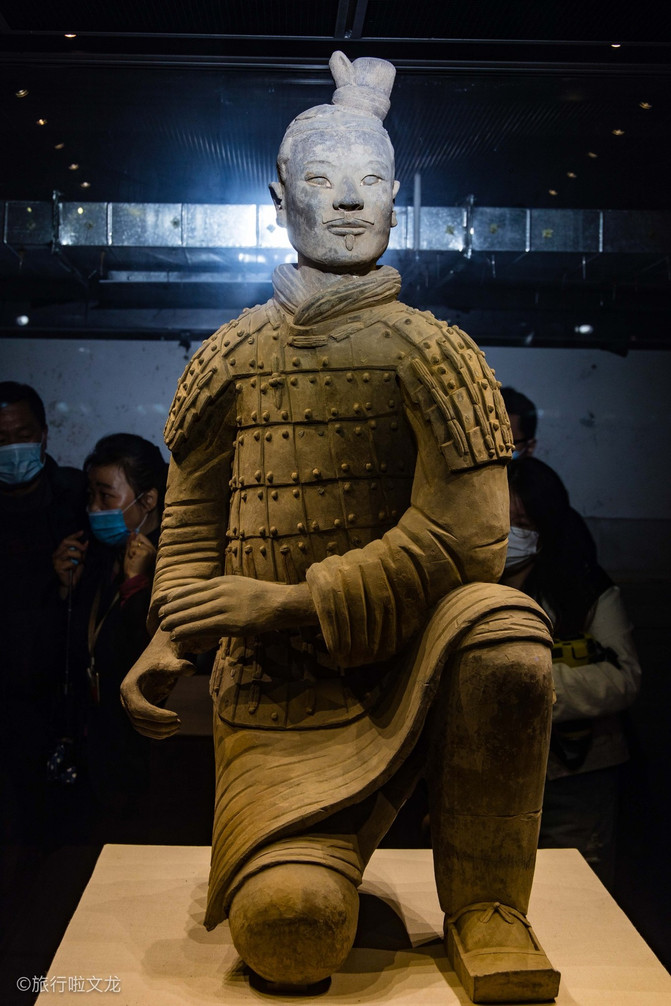


The terracotta warriors were once destroyed by tomb raiders, and there were still some burning phenomena inside. Therefore, many parts of the terracotta warriors we see are not so complete. However, such a large royal tomb garden is also a miracle of China and also a reflection of ancient times. The strategic layout is vividly displayed.
There are no terracotta warriors in Pit No. 4. Perhaps it has not been excavated by people, and current technology has not reached the level of excavating the terracotta warriors in Pit No. 4. The Terracotta Warriors and Horses are the golden business card of the ancient capital of Xi'an. The Terracotta Warriors and Horses Museum of Qin Shi Huang is very large, and the Terracotta Warriors and Horses are also ranked according to their status. The number of terracotta warriors and horses is huge. The terracotta warriors are arranged according to the status of the soldiers. They show us the strategic plans of ancient military and also show the image of the soldiers fighting bravely on the battlefield.
Shaanxi Museums
Xi'an must go to a museum for such a rich history. The Shaanxi History Museum in Yanta District displays objects from ancient life. The museum is only about 1 kilometer away from the Big Wild Goose Pagoda attraction. The buildings of the museum mainly show the style of the Tang Dynasty. In the museum, we also felt some simple stone tools from the original society of mankind.
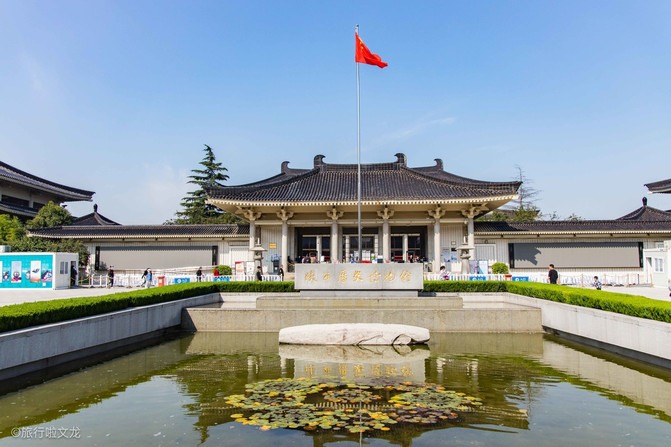


Shaanxi Museum is a comprehensive historical museum. The historical relics inside all show the crystallization of people's wisdom in ancient times. The museum covers an area of 8000 square meters, and the various exhibits displayed are very clearly classified. Yes. In the museum, we can appreciate Shaanxi's history and culture.



We enter Hall 1. Enjoy the exhibition of cultural relics unearthed in Hejiacun's cellars. The relics of Hejiacun are eye-opening. Whether they are bronze or pottery objects, they are amazing. I also saw the agate cup, the treasure of the town country in the Tang Dynasty, and it was also the treasure of the town hall in the museum.

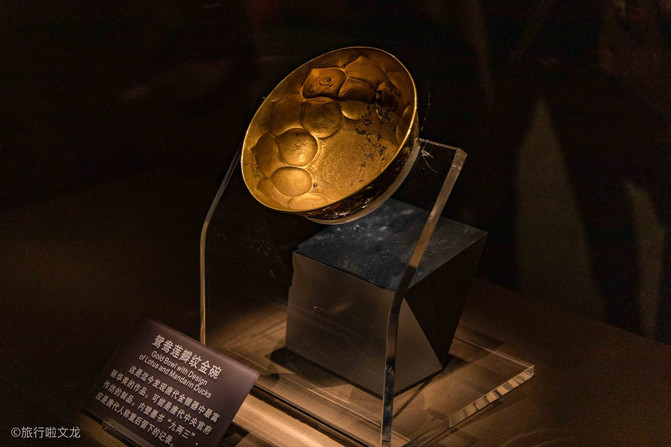

There are also many exquisite historical objects that we have never seen before, and we are also lamenting the creative ability and wisdom of people in ancient times. The most impressive thing is the golden bowl with mandarin ducks and lotus petals. As the most gorgeous and gorgeous work of the Tang Dynasty, it still shines in the museum.

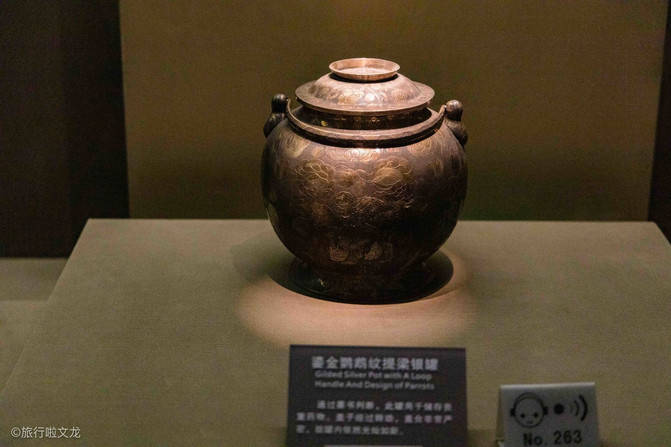

I am interested in some historical relics with relatively thick bottles, such as the silver cans shown in the picture, whose texture is very exquisite. The ancients had a sincere preference for horses, and horses would appear on many utensils.



There are more than 3900 bronzes in the museum, and there are many types of bronzes, whether musical instruments or weapons. The most eye-catching thing is that the statues of primitive people in the museum are very lifelike.



Many bronze objects are mainly tripods, and the number of pottery figurines is also very large. The pottery figurines collected here all vividly show war horses and some animals, as well as people's life in ancient times. The most interesting thing is the shape of the copper coins here. They are all round, and the patterns inside represent the currencies of different dynasties.

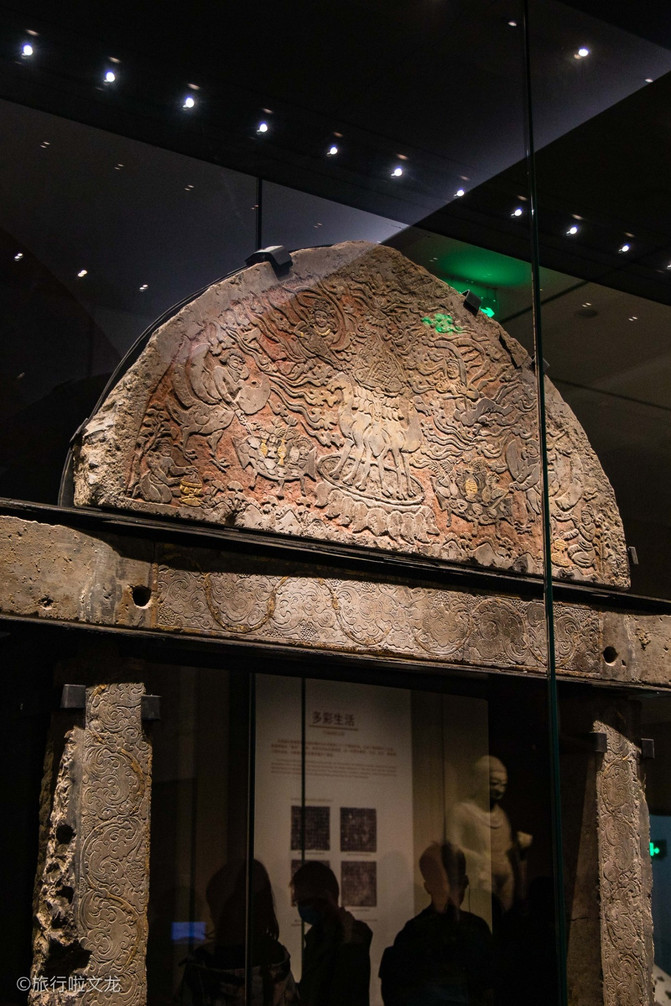

The museum is also carved with Buddha statues, which have a strong Buddhist cultural atmosphere. The figures carved on the walls or mountain birds, flowers and stones are very exquisite.

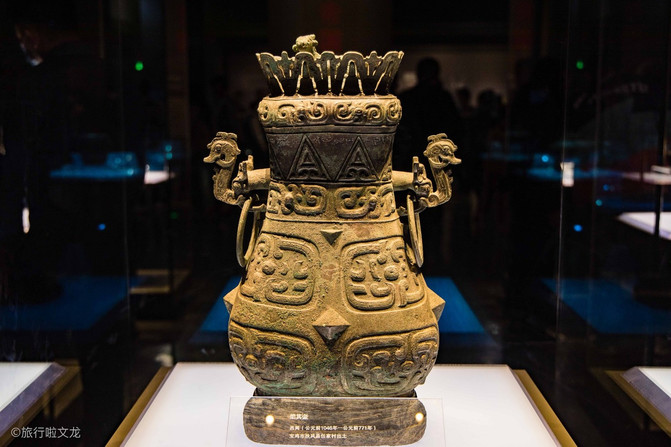

The content of the murals of the Tang Dynasty is also very interesting. The content of the murals not only vividly displays the architecture of the Tang Dynasty, hunting life, and the image of high-ranking officials in court, but also the friendly relations between neighbors and neighbors.
In fact, with so many exhibition halls and so many precious cultural relics, the amount of information is too much to digest at the moment. However, this is why, with the harvest of Chendian, the trip is worthwhile, and when I go back, I will go back to this period of history., grand history revives the past.
Dayan Pagoda
The Big Wild Goose Pagoda cannot be missed because of the fact that it has never slept in the Tang Dynasty in recent years. The charm of the Big Wild Goose Pagoda is its brick-imitation-wood building. Someone once said,"If you don't reach the Big Wild Goose Pagoda, you won't be able to reach Xi'an." It is worthy of being one of the representatives of Xi'an and a representative building of the artistic charm of Buddhist architecture in the Tang Dynasty.
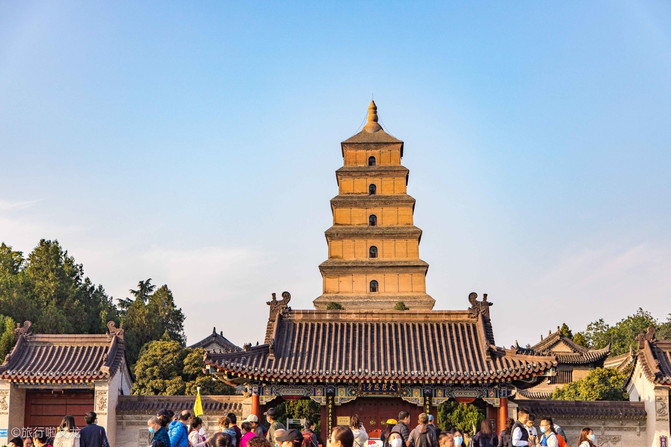

The majestic appearance of the Big Wild Goose Pagoda was shown in the descriptions of poets in the Tang Dynasty. For example, Cen Shen praised the Big Wild Goose Pagoda as "the tower is like gushing out, towering into the sky alone", and the tower's momentum arose spontaneously. Such a tower with a brick imitation wood structure is very special. From a distance, it would almost be thought to be a wooden tower. The tower has a total of 7 floors. Each floor has different historical stories and historical things. There are also more famous Buddhist figures such as Sakyamuni Buddha Buddha statue. Today's Big Wild Goose Pagoda is tilted because the former Big Wild Goose Pagoda was damaged. It was normal for ancient towers to tilt. People at that time did not have such sophisticated construction techniques. Today's Big Wild Goose Pagoda has been around for hundreds of years. This Big Wild Goose Pagoda is a brick imitation wood structure. Although it has a tilt, it is still very strong.



The Big Wild Goose Pagoda was rebuilt quite a few times. It was also a very famous tourist spot during the Tang Dynasty. There were many humanistic scholars and some large Buddha statues in it, which were brought back from India by Master Xuanzang. Emperor Xuanzong of the Tang Dynasty also built the Big Wild Goose Pagoda according to Xuanzang's ideas, and also built some small towers around it to accompany the Big Wild Goose Pagoda, making the surrounding beautiful scenery more enjoyable and beautiful. In ancient times, the Big Wild Goose Pagoda experienced wind and rain. It collapsed 50 years later, and today's Big Wild Goose Pagoda is also a replica.



Such a Big Wild Goose Pagoda with bricks imitating a wooden structure, and the tower body you see increases from top to bottom. Such a grand building tower is very spectacular, its shape is relatively monotonous and simple, and it can be seen from outside the tower. A strong sense of solemnity and simplicity. At the highest point in the tower, you can also overlook the entire style of the ancient capital Xi'an.



You can also see many famous titled steles when you enter the Big Wild Goose Pagoda from the south gate. There are also masterpieces of Xuanzang's glorious life here. On the second floor of the pagoda, there is a solemn Buddha statue of Sakyamuni, which contains many precious cultural relics. On the third floor, what is preserved is the composition and ideas of Xuanzang's model of the pagoda. On the fourth floor, there are Basil Leaf Sutra, which is full of Sanskrit and is not something that ordinary people like us can understand. On the seventh floor, as the highest point of the Big Wild Goose Pagoda, you can see all the beautiful scenery of Xi'an. The beautiful scenery of the ancient capital Xi'an has a panoramic view, and lotus caisines are also depicted.



The incense around the Big Wild Goose Pagoda is also very strong. The temples built around it are representative and very magnificent. The bronze statues enshrined in these temples are very solemn and grand, and the incense inside is endless. The bronze statues of some more meaningful representative figures are also listed in the temples. For example, you can seek wealth in the temple, symbolizing good wishes. This historical Big Wild Goose Pagoda in Xi'an allows us to feel the historical frontier of Buddhism.



The Big Wild Goose Pagoda is the symbol of the ancient capital of Xi'an. Some of the small halls around the Big Wild Goose Pagoda also have the most beautiful historical stories. Various buildings in the ancient capital of Xi'an have their own historical stories. Indulge in the ancient capital of Xi'an and feel the historical stories in every corner.
Night Wild Goose Pagoda
Colorful lights light up next to the Big Wild Goose Pagoda Music Fountain at night, as if you have stepped into a dream world through time and space. This music fountain is also the largest square of matrix fountain in Asia. Experience the magnificent scene in front of you in the musical fountain. The sound of the fountain falling to the ground is majestic, coupled with the embellishment of lights, Xi'an at night is covered with a mysterious veil.



The music fountain in the North Square of the Big Wild Goose Pagoda has the most luxurious greenery, and the toilets here are all contactless. The carvings here are actually two hundred meters long. The fountain is the central city of the Big Wild Goose Pagoda and is located in the north and south areas. A fountain more than 20 meters high is sprayed out of the water, which is very majestic. Coupled with the colorful lights on the square, this ancient capital has become prosperous and lively.



The fountain only performs twice a day, and all of them are after dark. The colorful lights on the fountain allow tourists to better feel the unique charm brought by the musical fountain. The Big Wild Goose Pagoda stands majestically in the square. The fountain as high as 20 centimeters rushed to the sky. Under the embellishment of the lights, the shape of the fountain became very beautiful. Colorful lights accompanied the fountain rushing to the sky. This is the first time I have seen such a spectacular fountain, which also allows tourists to feel excited and enjoy this beautiful scenery. Of course, tourists should pay attention to their own safety when watching. The large amount of water sprayed will also cause getting wet and dangerous.



There was already a crowd of people near the music fountain in the North Square before performances began. Various recording equipment recorded the spectacular scenes of the fountain one by one. Tourists with children also lift their feet on their shoulders in order to better allow their children to enjoy the magnificent scenery around them. The lively nights are always extraordinary, and the ancient capital at night is even more charming.



The beautiful scenery around the Big Wild Goose Pagoda is unparalleled at night. The red lanterns hanging on the trees are very beautiful and festive. The charm of the pavilions and pavilions at night can always trigger deep feelings and be attracted by the ancient buildings. The Music Fountain Scenic Area at North Square of the Big Wild Goose Pagoda is very lively at night. Tourists are almost at the same distance and the endless beautiful scenery around them. Such a prosperous and historical Xi'an is always something that people yearn for.



In the Tang Dynasty Sleepless City, we felt the performance of the tumbler. The performance of the tumbler actors was very wonderful, wearing gorgeous Tang Dynasty costumes to perform on the stage. The performance of the tumbler also inherits Xi'an's history and culture. We also saw souvenirs of the tumbler, each cute and cute tumbler souvenirs, which are very valuable for collection.



There are a lot of tourists watching the tumbler's performance. The tumbler's movements are very skillful, and her dancing posture is still full of smiles as she moves backwards and backwards. This little sister's tumbler's wonderful performance has also been popular on the Internet. Such a difficult performance is intoxicating and fascinating, and it will be unforgettable even after the performance is over. The performance of the tumbler also inherits the culture of the Tang Dynasty. This Tang Dynasty building complex and some artistic charm are always intoxicating.
Xi'an is a city worth visiting. Today not only has so many scenery, character, culture, but also a rich history. I think I will come again.
Previous Article:A seven-day trip to Xi'an for the family to be simple, refreshing and healing
Next Article:Shaanxi History Museum: How old is Shaanxi? How glorious was the Han and Tang Dynasties?
